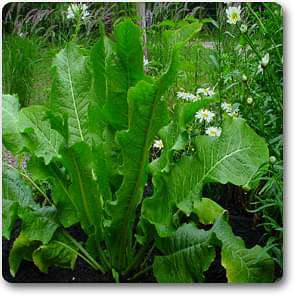Description
This plant is a great attractor for butterflies and bees, so if you are looking to attract wildlife Horseradish is a great choice.
Armoracia rusticana, commonly called horseradish, is a somewhat coarse vegetable that is grown for its pungent, fleshy roots which are harvested and grated to make sauces or relishes.
Plant features large, variably sized (up to 2 long), dock-like, toothed, shiny, dark green leaves and insignificant, whitish flowers which appear in summer in terminal panicles.Plant Specifications
| Common Name | horseradish |
| Maximum Reachable Height | 2.00 to 2.50 feet |
| Flower Colour | white |
| Bloom Time | Flowers not showy |
| Difficulty Level | easy to grow |
Planting and care
Best left undisturbed until harvest time in winter as broken roots will freely germinate. Roots can be taken at any time though.
Armoracia rusticana care
Try to plant in a location that enjoys partial sun / full sun and remember to apply water fairly sparingly. Horseradish is generally regarded as a hardy plant, so this plant will survive close to or on freezing temperatures.
| Sunlight | Full sun |
| Watering | Medium |
| Soil | well-drained soil |
| Temperature | 32 degree F |
| Fertilizer | Apply any organic fertilizer |
Armoracia rusticana special feature
butterflies and bees attracter
Armoracia rusticana uses
Ornamental Use:
- Grow in a quiet, sunny corner of the vegetable garden where its spreading habit will not crowd out other plants
Medicinal Use:
- High Vitamin C content
- Has anti-bacterial, diuretic and stimulant properties
- Horseradish and honey when gargled are said to be good for sore throats
- Can be used as a tonic for the liver and spleen
- Can help digestion and wind!Can ease arthritis, gout, urinary tract infections and sciatica
Culinary Use:
- Flowers are used to make Horseradish Sauce
- The leaves are also spicy when eaten raw



Comment